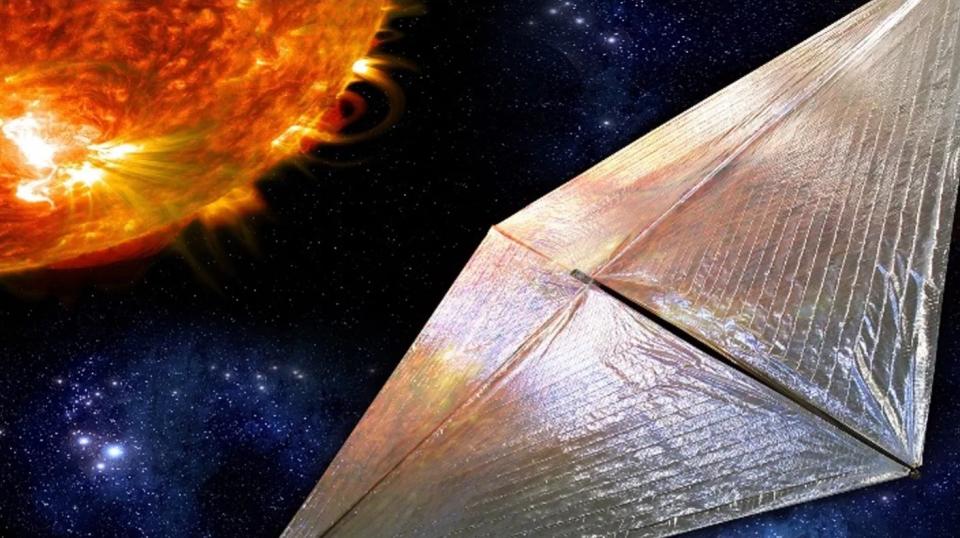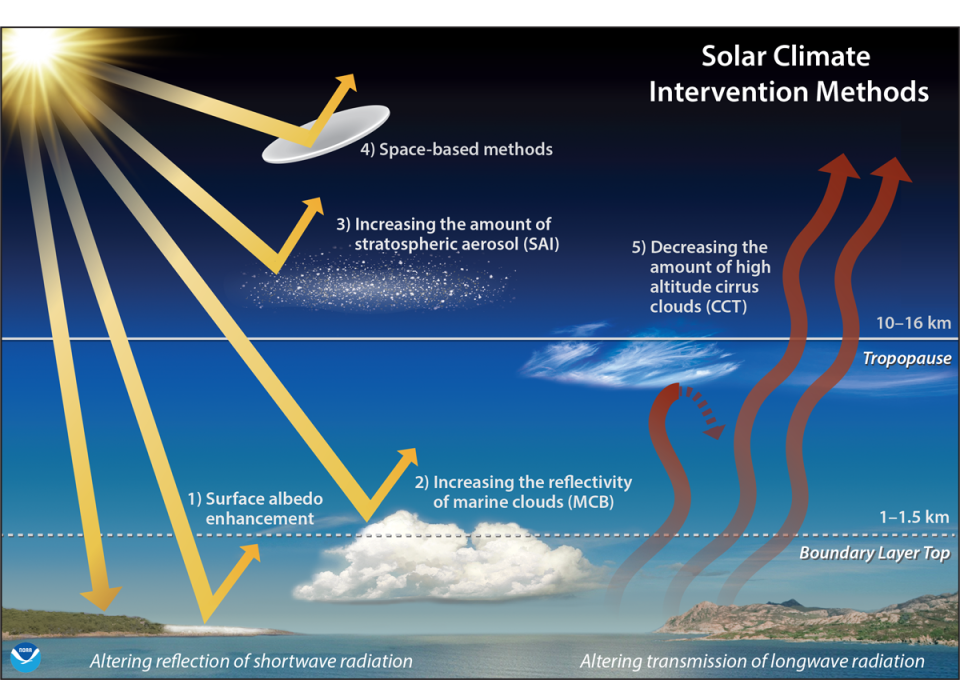A group has been formed to study and promote a space-based solar shield to help ward off global climate change.
The idea has been discussed for years, but the Planetary Sunshade Foundation is releasing documents that support the concept and highlight the practical feasibility of the approach.
A planetary solar shield, the Foundation advises, could be the best solution for managing solar radiation and should be seen as an important part of global efforts to combat ongoing climate change on Earth.
Related: Experts are certain that 2023 will be ‘the hottest year in history’
A matter of degrees
Reversing the worst effects of climate change could well rest on three pillars: emissions reduction, carbon dioxide removal and solar radiation management.
There is an international agreement to ensure that the world average temperature does not exceed 1.5 degrees Celsius (2.7 degrees Fahrenheit) above current averages. But the cold fact is that the lower the average temperature increase, the lower the climate impact.
That said, climate change researchers have reported that our planet may exceed 1.5°C in the next decade. In the meantime, there are now more cases of extreme weather, trends in sea level rise, widespread fires and melting ice caps.
Coupled with these warning signs is political pressure to combat the calamities of climate change.
Livable planet
Morgan Goodwin is the Executive Director of the Planetary Sunshade Foundation.
As for why the group is pursuing this initiative, Goodwin is clear that current decarbonization strategies are necessary, but insufficient for a livable planet.
Decarbonization is the reduction of carbon dioxide emissions by using low-carbon energy sources to achieve lower emissions of greenhouse gases that enter the Earth’s atmosphere.
“To avoid the worst impacts of climate change, the world must rapidly phase out fossil fuels, remove gigatons of carbon from the atmosphere and limit incoming solar radiation,” Goodwin told Space.com. Of all the methods proposed to reduce solar radiation, the parasol, in his opinion, has many advantages that deserve to invest in this concept.

Construction strategies
Touted as a “megastructure” in space, a solar shield would be installed at the Sun-Earth Lagrange-1 point. Once in place, it could reduce radiative forcing – the trapping of heat in the atmosphere due to greenhouse gas emissions – by reflecting sunlight back into space.
The foundation says that the construction of a planetary sunshade is possible, based on the first solar sail technology that has already been used. “The rapid technological advances of space launch systems have caused the costs of sending materials and people to space to fall rapidly, changing the scope of what is possible.”
According to the foundation, there are two possible awning construction strategies.
“We are pursuing both options and believe that if a planetary solar array is built, the initial phases of construction will be Earth-launched architecture, while the later phases will utilize space assets and in-orbit construction,” the the group’s website.


Hands off Mother Nature?
But there are those who cling to the belief: “You shouldn’t fool Mother Nature!”
Goodwin responds by pointing out that humans are tampering with Mother Nature on a massive scale through state-sanctioned and often state-subsidized industrial practices.
“Our survival as a civilization depends on our ability to wisely and intentionally change the way we treat our planet,” Goodwin said.
Indeed, last year the White House published a congressionally mandated report on geoengineering governance pathways, Goodwin said, a document that takes “a small but solid step forward,” he added, in creating a framework for further investments in geoengineering research.


Report takeaways
In June of this year, the White House Office of Science and Technology Policy released the congressionally mandated report on solar radiation change.
Regarding the report’s conclusions, it cautions that any potentially comprehensive research program must include both the social and scientific dimensions of solar radiation modification.
The paper highlights a number of key priority areas for further research into solar radiation modification, including determining the climate and environmental impacts of applying solar radiation modification; assessing potential social outcomes and ecological impacts; and the need to explore how research can be done in collaboration between international partners.
That report also recognizes that research into the impacts of changing solar radiation has thus far been ad hoc and fragmented, rather than being the product of a comprehensive strategy. As a result, significant knowledge gaps and uncertainties exist in many critical areas.
Uncertainties, risks, challenges
Earlier this year, the Global Commission on Governing Risks from Climate Overshoot (the ‘Climate Overshoot Commission’) released their report.
This independent group of world leaders recommended a strategy to reduce the risks if global warming targets were exceeded, that is, a “climate overshoot” exceeding the 1.5°C threshold.
In the committee report they discussed space-based reflectors; stratospheric aerosol injection, cirrus cloud thinning, and marine cloud brightening – all solar radiation modification (SRM) techniques.
“But SRM would address climate change imperfectly and poses serious uncertainties, risks and governance challenges,” the commission’s study said.
RELATED STORIES:
– NASA confirms that the summer of 2023 was the warmest on Earth ever
– Climate change has pushed Earth into ‘uncharted territory’: report
— NASA’s new ‘Greenhouse Gas Center’ tracks humanity’s contribution to climate change
“The governance gaps for SRM are the most acute,” the report said. “How can this be investigated and evaluated without distracting from the essential reduction of greenhouse gas emissions? Who decides whether SRM is undertaken and under what circumstances? How can the differences between countries on this issue be resolved?”
Goodwin of the Planetary Sunshade Foundation concludes that this year will close as the hottest year on record, replacing 2022, which in turn took that title from 2021. the table.”
Whether or not a sun-resistant, ‘made in the shade’ sail remains a bright prospect on the discussion table remains to be determined.